Abstract
The chemical taxonomic relationship of microorganisms has been studied through the hydrocarbon fraction of their chemical constituents. The diagenesis and biological transformations of some hydrocarbons in sediments is suggested, as a result of this information.
Full text
PDF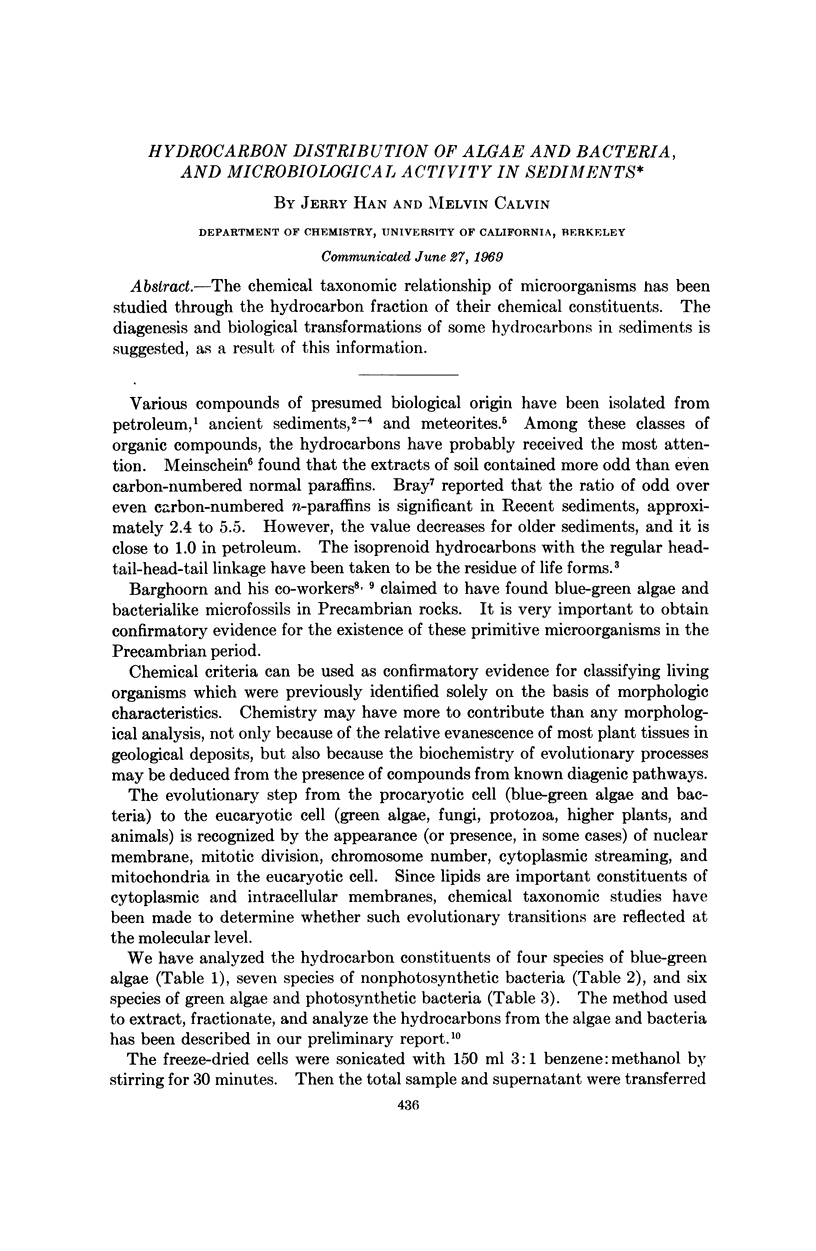

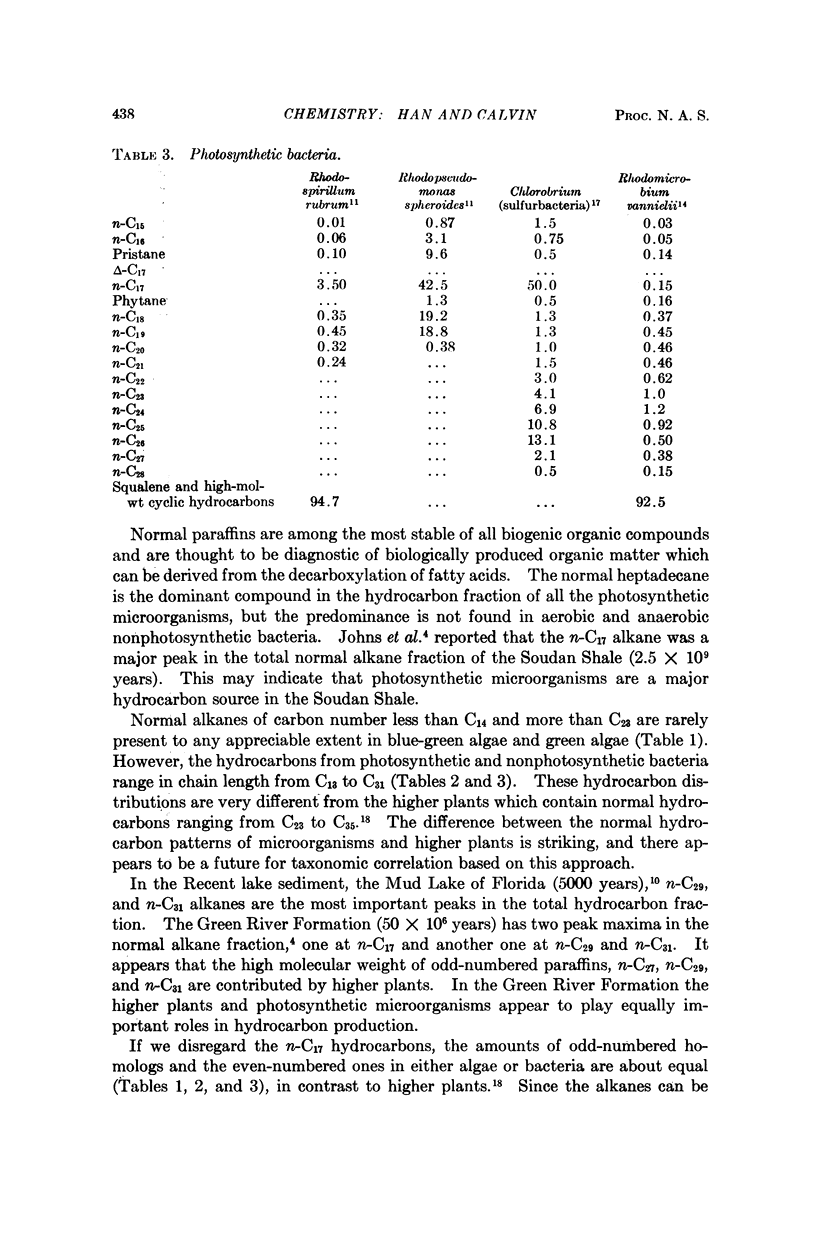
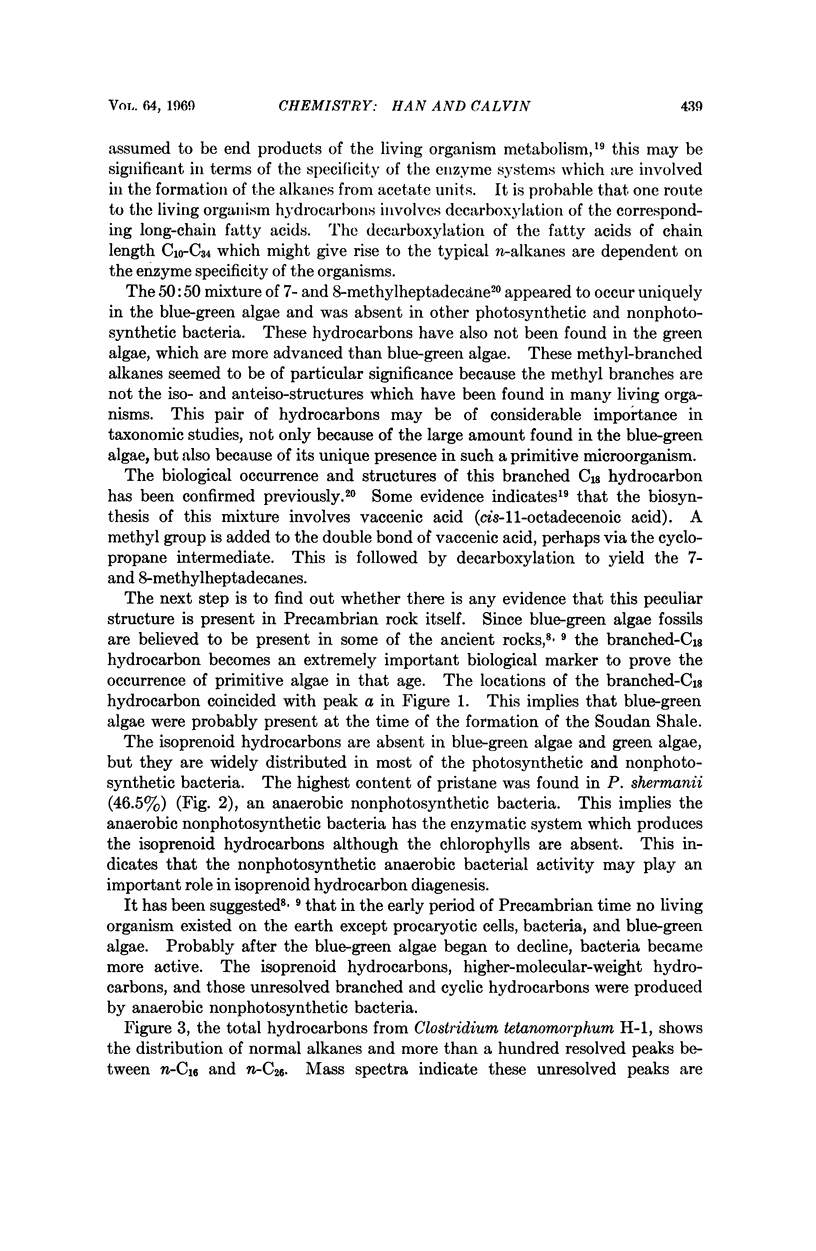

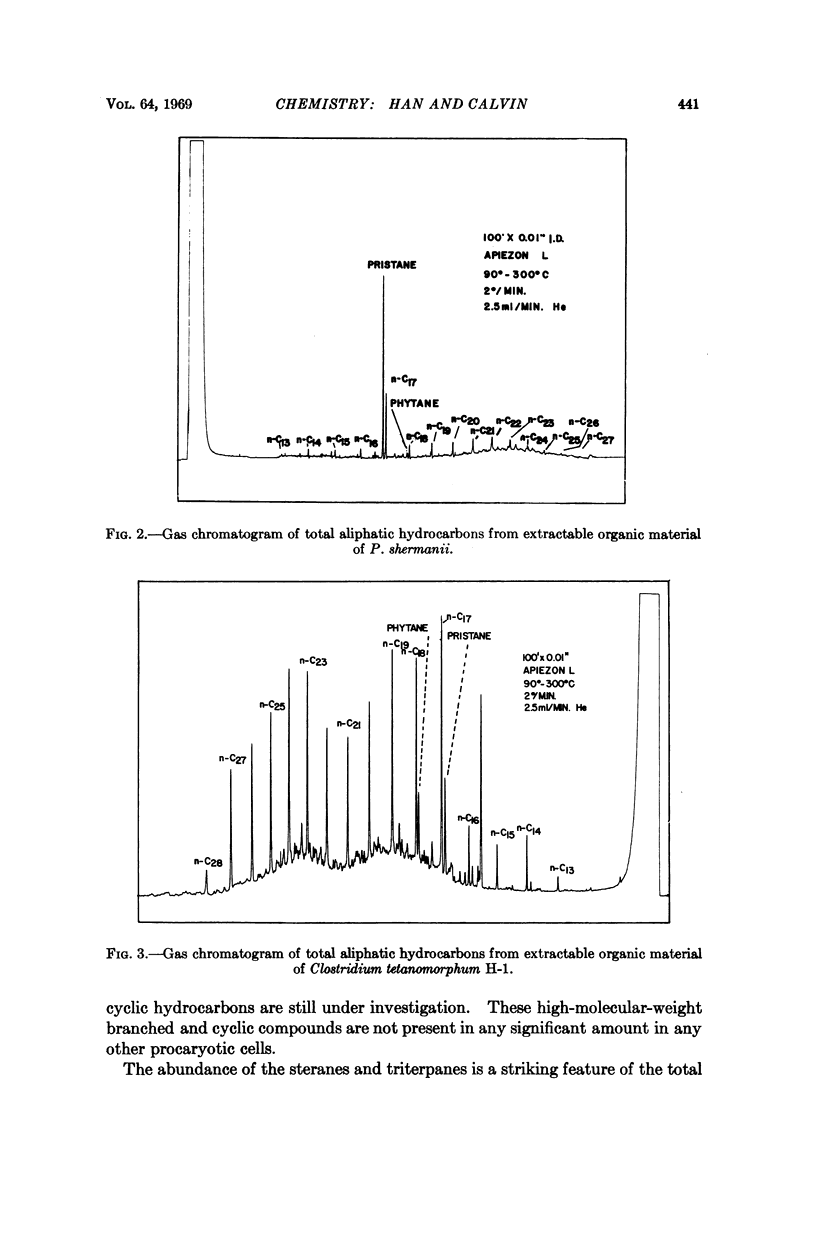

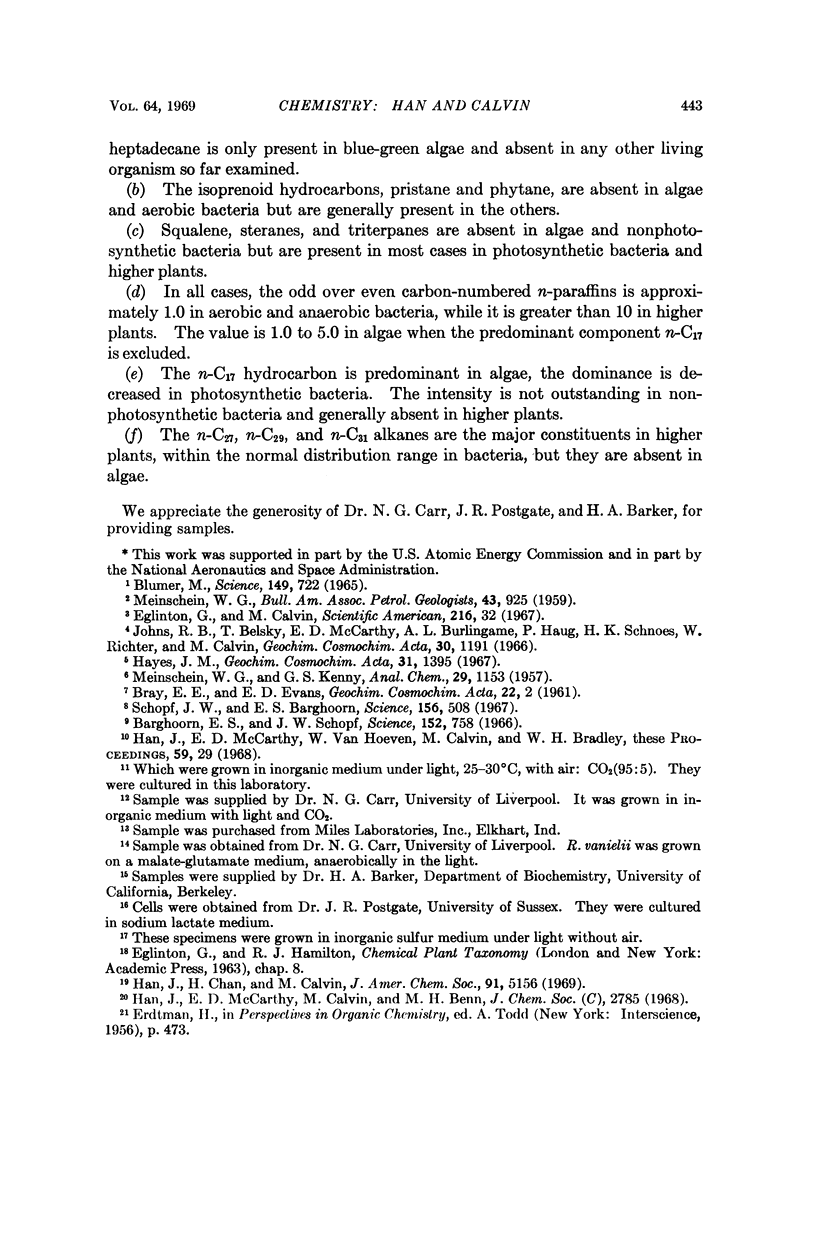
Selected References
These references are in PubMed. This may not be the complete list of references from this article.
- Adolph E. F. The heart's pacemaker. Sci Am. 1967 Mar;216(3):32–37. doi: 10.1038/scientificamerican0367-32. [DOI] [PubMed] [Google Scholar]
- BLUMER M. ORGANIC PIGMENTS: THEIR LONG-TERM FATE. Science. 1965 Aug 13;149(3685):722–726. doi: 10.1126/science.149.3685.722. [DOI] [PubMed] [Google Scholar]
- Barghoorn E. S., Schopf J. W. Microorganisms three billion years old from the precambrian of South Africa. Science. 1966 May 6;152(3723):758–763. doi: 10.1126/science.152.3723.758. [DOI] [PubMed] [Google Scholar]
- Han J., Chan H. W., Calvin M. Biosynthesis of alkanes in Nostoc muscorum. J Am Chem Soc. 1969 Aug 27;91(18):5156–5159. doi: 10.1021/ja01046a037. [DOI] [PubMed] [Google Scholar]
- Schopf J. W., Barghoorn E. S. Alga-like fossils from the early precambrian of South Africa. Science. 1967 Apr 28;156(3774):508–512. doi: 10.1126/science.156.3774.508. [DOI] [PubMed] [Google Scholar]


